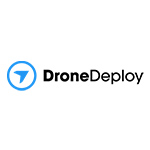DataChat brings the power to analyze complex data sans expertise to Google Cloud Marketplace with help from SADA, An Insight company.
/ Learn moreSADA helps DroneDeploy take flight with Google Cloud

/ AT A GLANCE
During the migration process, Mente says, SADA’s Technical Account Management (TAM) representative helped DroneDeploy with very specific, highly technical questions about the migration itself as well as particular GCP features. SADA also wrote a script to call the API for Google’s migration tool.

INDUSTRY Software & Technology
COSTS Reduced
SCALABILITY Increased

In many industries, using commercial drones is a matter of when, not if. The global commercial drone market is expected to exceed $43 billion in 2024, up from $14 billion in 2018, with software the fastest-growing segment of the drone industry.
Drone software platform developer DroneDeploy is a startup with a mission to put a drone on every job site. “We try to make drones actually useful in our world, as opposed to them being expensive toys,” says Joseph Mente, Engineering Manager, DevOps, DroneDeploy. “Right now, there is very little market penetration; using drones to capture images and data is a novel idea. Our expectation is that in 5 to 10 years, commercial drones will be the norm.”
One of DroneDeploy’s major investors is in the energy industry, but DroneDeploy’s software is used by businesses in an array of industries, including agriculture, construction, insurance, utilities, and green energy. Inspections are currently the most common application for commercial drones, but there are unlimited potential use cases for a camera in the sky. Mente sees great promise for land-based drones as well, so that companies can get comprehensive, bird’s eye and ground-level views of their job sites, equipment, and other assets.
Business challenge
In addition to enabling users to control drones in the air and take aerial photographs, DroneDeploy’s drone software platform allows drones to capture any type of drone media, including maps, videos, and panoramas, as well as detect and count objects such as cars and trees. The software also processes and analyzes collected data, and lets users generate reports with detailed maps, models, and videos. The solution also utilizes artificial intelligence to learn what individual users need; with each flight, results become more tailored to their specific industries and use cases.
“The drones are only one part of the picture; they’re just the entry point to collect information. DroneDeploy’s platform doesn’t just offer our customers the ability to fly their drones and collect data; we analyze it so that they can make critical decisions. Farmers need to know where to place fertilizer. Historically, they would get an aerial view of their crops infrequently, but now, they can get a map every day for less than the price of a single helicopter flight. The same is true for construction, real estate, insurance, oil and gas, and other industries. We enable our customers to understand their physical assets and infrastructure.”
Joseph Mente, Engineering Manager, DevOps, DroneDeploy
DroneDeploy’s platform requires enormous quantities of storage and computing power, along with high performance and availability. “We’re storing not just source imagery but things like point clouds and 3D models,” Mente notes. “Everything needs to be stored efficiently and available to the customer when they need it.” Protecting both their customers’ data and their own digital intellectual property from data breaches is also a top concern.
Prior to deciding to migrate to Google Cloud Platform, DroneDeploy performed data processing in a colocation data center, where they ran nearly all of their compute loads on Kubernetes clusters, and used Amazon Web Services (AWS) for storage and web traffic. While DroneDeploy was very pleased with how Kubernetes worked for them, they found it very time-consuming to maintain. Time spent managing their Kubernetes installation was time that wasn’t being spent working with customers or on internal projects to drive and grow the business.
DroneDeploy knew that to move forward strategically, they needed to shift to a cloud-based, managed Kubernetes solution.
Solution
When DroneDeploy began evaluating managed Kubernetes solutions, Google Kubernetes Engine was the one available solution that fit their needs and, Mente said, “was by far years and years ahead of the competition. Nothing else even came close.”
GKE wasn’t the only determining factor in choosing Google Cloud Platform. DroneDeploy was also impressed by GCP’s artificial intelligence capabilities and security features. “GCP’s AI features were years ahead of what others offered, and the platform is secure by default,” Mente notes.
DroneDeploy executed its migration in stages. The first step was to move their Kubernetes clusters out of their colocation data center, which they did on their own.
“It’s very expensive to move data, so we had left all of our image assets on Amazon S3, but once all of our compute was on GCP, that wasn’t sustainable. The data transfer costs were too expensive, and it didn’t fit where we wanted to be in the long-term. So, we approached Google, and that’s when we partnered with SADA Systems for technical assistance with migrating data from Amazon S3 to GCP Cloud Storage.”
Joseph Mente, Engineering Manager, DevOps, DroneDeploy
Moving the data, Mente says, was a challenge in itself — DroneDeploy had 3 petabytes stored on S3 — and their new GCP environment needed to be configured properly. “You can’t just replace S3 with GCP and have it be exactly the same; they have different features,” Mente explains. “For example, our users could directly and securely upload data to S3, and we had to write code so that they could keep doing that once we moved the platform to GCP.”
During the migration process, Mente says, SADA’s experts helped DroneDeploy with very specific, highly technical questions about the migration itself as well as particular GCP features. SADA also wrote a script to call the API for Google’s migration tool. “We had to split up our storage in a particular way that required many calls to this system; we had to change the architecture of our storage system during the migration. We had data in Amazon buckets that we knew we didn’t need to transfer because they were expired. There was a lot of complexity to this, and SADA wrote the majority of the code, which was very helpful.”
Results
Since migrating to GCP, DroneDeploy’s infrastructure team no longer has to maintain an on-prem Kubernetes installation, which gives them more time to innovate and work on internal projects. “Our team can now manage more clusters on GCP than they did on-prem, and do so in less time,” Mente explains.
DroneDeploy has “drastically reduced” their year-over-year costs, and a large part of this is due to the easy scalability they enjoy on GCP. “In the data center, we couldn’t autoscale. On GCP, it’s just a click of a button,” Mente says. “I don’t have to write fleet management software. We did have to modify our software to support autoscaling, but we didn’t have to write infrastructure code, and infrastructure code can be tricky. Using GCP, we know we won’t have issues.” Mente also reports that they used to have to ensure they had 50% extra capacity at any given time in case of zonal failure. On GCP, they can run at 100% utilization, because if one zone goes down, the others will autoscale up.
Mente also reports that compliance and security are also easier on GCP. “Some of our quarterly compliance requirements weren’t possible before, like rolling all of our machines to make sure they have all the latest patches. Now, we just do them. It’s also great to be able to use the same infrastructure and IAM management as we do on G Suite. We can use SSO for both GCP and G Suite. G Suite acts as the source of truth, and everything derives from that. Security is very complicated, but Google makes it easy.”
DroneDeploy continues to make use of SADA’s technical expertise, including a monthly check-in.
“This is a great point of contact for any questions we have, technical or business-related. It’s helpful to have connections within Google, not just for GCP but anything Google offers. We had G Suite management questions that we didn’t have internal expertise on, and SADA connected us with a G Suite expert.”
Joseph Mente, Engineering Manager, DevOps, DroneDeploy
DroneDeploy also has a monthly budget check-in with SADA, which Mente reports is helpful to ensure that anomalous spending is identified. At one point, DroneDeploy had misconfigured a Kubernetes pod. They had caught this internally, but SADA also brought it up independently. “Knowing that we have a second set of eyes looking at things provides peace of mind,” says Mente.
Mente reports that DroneDeploy is very happy with GCP and utilizes quite a few features, including heavy use of machine learning tools for new products and features the company is developing. In the future, DroneDeploy would like to take further advantage of Stackdriver for logs and metrics and BigQuery for data warehousing.
DroneDeploy has drastically reduced their year-over-year costs, and a large part of this is due to the easy scalability they enjoy on GCP. "In the data center, we couldn't autoscale. On GCP, it's just a click of a button."
— Joseph Mente, Engineering Manager, DevOps, DroneDeploy
More customer stories
What we're up to
Solve not just for today but for what's next.
We'll help you harness the immense power of Google Cloud to solve your business challenge and transform the way you work.


